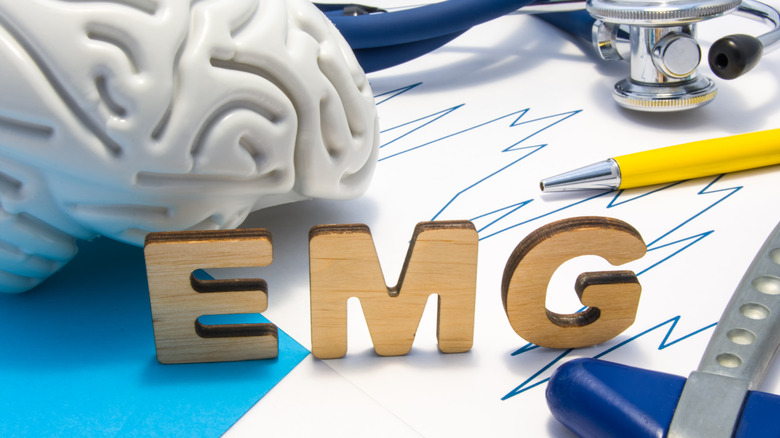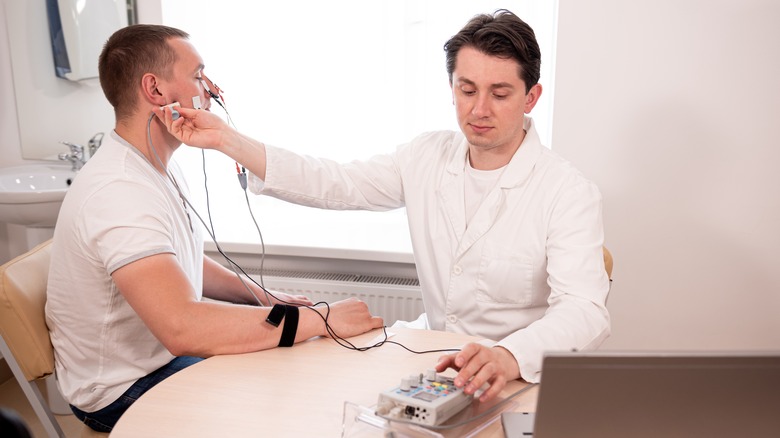What Happens To Your Body When You Get An EMG?
Experiencing unexplainable pain, tingling, or numbness in your body can be frightening and can cause you to wonder why it's happening. Each cell of the human body communicates with other cells by emitting electrical signals. According to the University of Maryland Graduate School, abnormalities in the body's electrical signals can contribute to the development of diseases, and diagnostic studies like electrocardiograms (ECG) can detect these irregularities. You or a loved one may have had an ECG before, which measures the electrical signals of the heart.
Electromyography (EMG) is a similar concept to ECG, except it measures the muscles and nerve cells of the body. If you are experiencing abnormal sensations like limb weakness or numbness, your primary care doctor may recommend an EMG test to gain an understanding of what's causing your symptoms (per Healthline). With the results of an EMG test, your doctor can diagnose potential muscle or nerve disorders, like muscular dystrophy and amyotrophic lateral sclerosis (ALS).
Before an EMG exam, a neurologist will typically administer a nerve conduction study (NCS). During this study, the physician places electrodes on the skin and sets off electrical pulses that stimulate specific nerves. As explained by the Icahn School of Medicine at Mount Sinai, the length of time it takes for electrical signals to move between electrodes is measured. The purpose of this test is to pinpoint any abnormalities in a muscle, as well as detect any nerve damage that might have occurred in the body.
What can you expect during an EMG?
Upon completion of the nerve conduction study, the doctor will get ready to perform the EMG portion of the test. An electrode will be inserted into the tissue of the targeted muscle with a needle, as reported by Healthline. This needle will measure the electrical signals that are transmitted by your muscle while at rest and during contraction. As demonstrated by physiatrist Robert Whitten, this procedure helps doctors listen to the muscle "talk" through sounds and spikes on a monitor (per YouTube). In his explanation, the results of the test are analyzed by observing how big, fast, frequent, and crowded the spikes representing motor units of the muscle are on the monitor.
After hearing the word "needle," you may wince and wonder if getting an EMG is painful. The Hospital of Special Surgery shares that the exam is generally well tolerated by most patients, although there can be some minor discomfort. They reiterate that the test is considered to be safe and sterile, as every patient receives a new needle and the used needle is disposed of quickly. You may experience temporary muscle soreness afterward, or some potential bruising in the area where the needle was inserted (per Mayfield Clinic).
The neurologist will analyze your nerve conduction study and EMG results and share them with your primary care doctor. According to the Mayfield Clinic, a positive test result would indicate nerve damage and a negative test result would imply that everything is normal.


